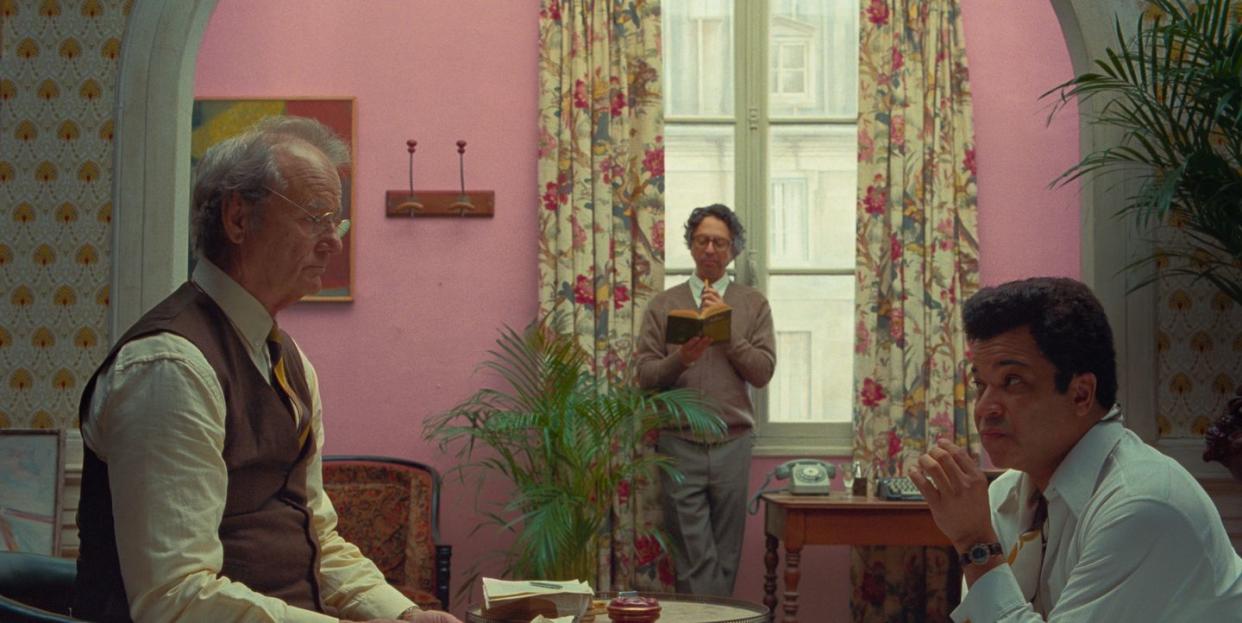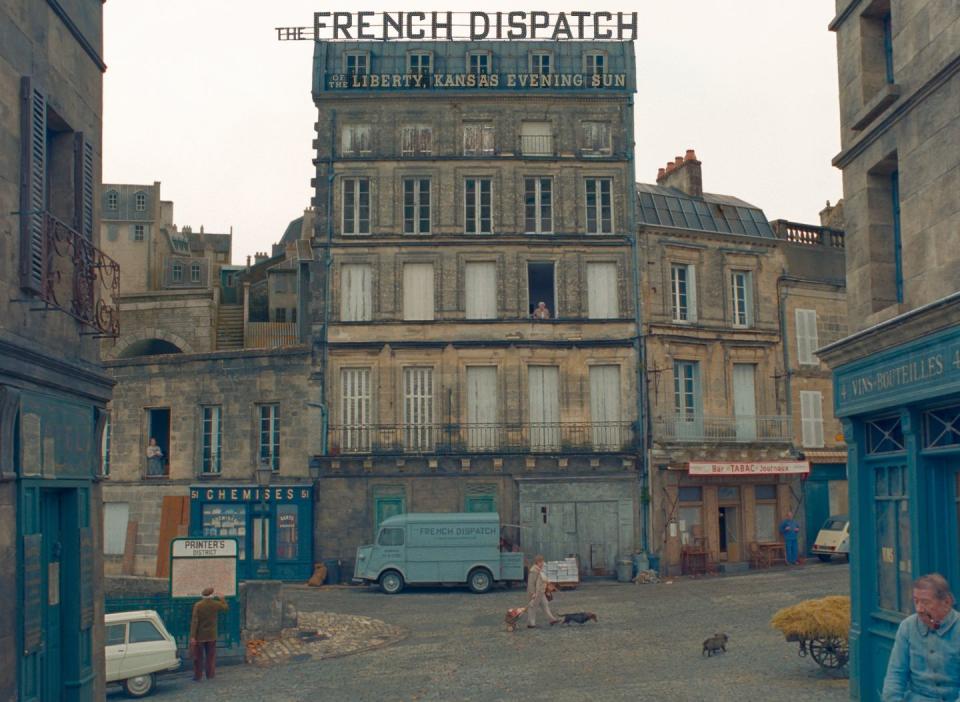The Set Decorator of Wes Anderson's "The French Dispatch" Reveals the Best Design Moments of the Film

Wes Anderson films are arguably best known for their visual appeal. One look at his Instagram account and it's no surprise that more than 1.5 million people follow along to see well-designed spaces that could very well be a backdrop in one of his movies. So naturally, his latest production—The French Dispatch, in theaters this Friday, October 22nd—is filled with a bevy of enviable design moments. House Beautiful spoke to set decorator Rena DeAngelo to find out exactly what inspired the Wes Anderson-approved sets.
“When we started the process of designing this film, Wes gave us a list of French films to watch," DeAngelo reveals—among them, The Red Balloon, The 400 Blows, Bande à Part, and Vivre sa Vie. The design team also had access to an extensive collection of photos of Paris from the mid-1800s through the 1950s and 1960s, prior to the reconstruction era. Anderson wanted them "to get a feeling of Paris when it was dirtier—still beautiful, but grimy," she notes. "The streets weren’t clean—buildings were in disrepair."

After scouring the country for a place that had the grunginess Anderson wanted to capture, they finally came across the perfect spot: Angoulême, France. “It had all the right architecture, the hills, winding streets, and wasn’t scrubbed clean,” DeAngelo explains.
When it came to sourcing the furnishings and decor for The French Dispatch, DeAngelo visited flea markets and prop houses in both Paris and Angoulême. One particular estate liquidator in the latter town was an “invaluable source,” as he provided furniture—as well as lamps, rugs, and accessories—from various time periods.
Of course, bringing the sets of The French Dispatch to life involved numerous filming locations, including an abandoned felt factory located five minutes outside of Angoulême, which became the design team’s “home base.” “We built all the stage sets there, had our offices, the carpentry mill, and paint shops and all the props storage” at this site, reveals DeAngelo.

Additionally, sets were built in a number of spots throughout and right outside Angoulême, including a dilapidated building that acts as a prison, complete with tiled floors and a concrete balcony.
Because The French Dispatch is broken up into several different stories, each section had to have its own visual aesthetic as well. In that sense, says DeAngelo, “it was like designing four different movies, since each had such a distinctive look and point of view, like the writers who narrate each. The script gave very exacting descriptions of each of the writers and of the locations and sets we were to decorate and design.”
One such set is the office of Roebuck Wright (played by Jeffrey Wright): a maximalist space complete with vibrant pink walls and a set of floral curtains that Mario Buatta would approve of. In describing this character, Wes Anderson deemed Wright a mix of James Baldwin and A. J. Liebling, with a dash of Truman Capote. So when it came to bringing the set to life, DeAngelo and her team felt Wright’s home should be “a bit more decorated than the rest.”

In juxtaposition to the colorful Wright residence, parts of The French Dispatch were filmed in black and white, making for a bit of a challenge when dressing the sets, reveals DeAngelo. “I needed to become familiar with how colors look in black and white, how they contrast with each other, so it doesn’t turn to mud.”
At the same time, however, “making the set look attractive and realistic in real life for the actors and crew” was paramount as well. This was especially challenging when creating the Cadazio art gallery, says DeAngelo, since “every surface [in this space] was covered with art sculpture rugs and tapestries.” Luckily, the designer found that the set "looked as good in color as it did in black and white.”
Follow House Beautiful on Instagram.
You Might Also Like


